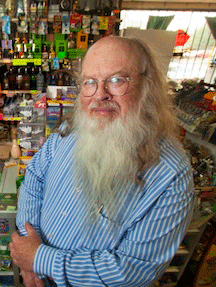By Jacqueline Wong
There is a common misconception that crime cannot be controlled or quelled by scientific study—that quantifying such irrational situations is useless in its prevention. However, in his new book Alcohol and Violence: The Nature of the Relationship and the Promise of Prevention (Lexington Books, 2012), Robert Nash Parker rejects, debunks, and dispels this myth. Parker became a member of Phi Beta Kappa as a graduate student at Duke University, where he received his Ph.D. in 1980. Now as a professor of sociology at the University of California Riverside, Parker has dedicated his research in examining the role that alcohol plays in violent communities. Parker, recently presented research and findings from the book, co-authored with Kevin J. McCaffree, at a symposium at UC Riverside, giving an insider’s look on sociology field research.
Corresponding to his book, Parker split his presentation into two parts, explaining his research methods first. When he started his project, he stressed the necessity of filling in the missing gaps about alcohol prevention, claiming that, “if we believe in this scientific basis to understand the situation, this implies ways in which we can intervene and reduce crime and violence.” Once he had a solid foundation of research to work with, he was ready to conduct his experiments. He then transitioned into the second part of his presentation, explaining how he and a team of researchers conducted a series of longitudinal experiments of intervention across the country. By intervention, he means aiding a collective group of citizens to “organize themselves to better the community,” specifically by facilitating alcohol regulation laws. Structuring his experiments into three stages of analysis: before, intervention, and after, he hypothesized that “if people intervene in their communities, we ought to expect a decline of violence.”
Parker then delved into the details of his experiments, which consisted of linking alcohol sales to crime rates in different cities. This included examining each city’s zoning plan, and how community establishments, such as residential, commercial, schools, restaurants, etc., are separated from each other. He brought up an example of an experiment done in Union City, CA, where he noticed that businesses would get mixed around in different zones. This is why he saw a higher concentration of alcohol establishments throughout the city, and not just in one area. He also found that in communities with a higher concentration of places that serve alcohol, controlling other factors, the rate of violence increased. After discovering this trend, he and his team helped communities implement new laws of alcohol regulation in order to prevent violence.
These new acts of regulation included monitoring how bartenders interact with their customers. Because it is illegal to sell alcohol to already intoxicated customers, the Responsible Beverage Service (RBS) trains bartenders to properly identify and interact with intoxicated customers. As incentive for following these procedures, alcohol establishments also receive a reduction in server liability insurance if their bartenders hold this class certification. Other preventative measures he helped facilitate included DUI checkpoints and employing underage decoy stinks to expose and reduce the sale of alcohol to minors. After implementing these strategies, he found that the ratio of violence, assault, and robbery all declined.
After presenting his research and examples, Parker concluded that “it’s possible to organize your own community in a way to reduce violent crimes.” The results he presented were indeed due to a coalition of citizens organizing themselves, and intervening in the sale of alcohol to better the community. Despite the misconception that crime cannot be controlled, Parker’s research is proof that it is possible, and can also be used as a model for other communities to follow. Ending his presentation with words of encouragement, he asserted that “we can intervene, and we can see reductions in violence no matter what else is going on…it can be done, so everyone should do it.”
Jacqueline Wong is a junior at the University of California Riverside majoring in English. The University of California Riverside is home to the Iota of California Chapter of Phi Beta Kappa.
Photo at top, Robert Nash Parker (




